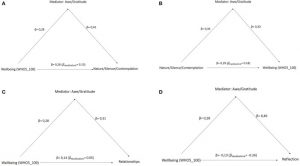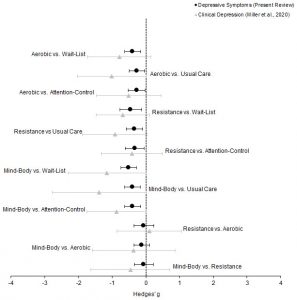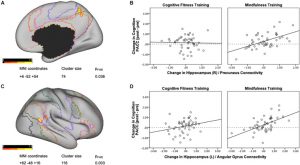Improve the Symptoms of Central Pain Sensitization Syndromes with Mindfulness
By John M. de Castro, Ph.D.
“Central sensitization, in short, is a hypersensitivity to stimuli from things that are not typically painful. . . Stress can heighten pain even more, so various forms of stress management may be recommended to patients. This may include practices such as yoga, mindfulness, or meditation.” – Southern Pain
We all have to deal with pain. It’s inevitable, but hopefully it’s mild and short lived. For a wide swath of humanity, however, pain is a constant in their lives. At least 100 million adult Americans have chronic pain conditions. Central Pain Sensitization Syndromes such as fibromyalgia and Migraine headaches are particularly difficult to deal with as they have triggers that are not normally painful.
The most common treatment for chronic pain is drugs. These include over-the-counter analgesics and opioids. But opioids are dangerous and highly addictive. Prescription opioid overdoses kill more than 14,000 people annually. So, there is a great need to find safe and effective ways to lower the psychological distress and improve the individual’s ability to cope with the pain. There is an accumulating volume of research findings that demonstrate that mindfulness practices, in general, are effective in treating pain.
A therapeutic technique that contains mindfulness training and Cognitive Behavioral Therapy (CBT) is Acceptance and Commitment Therapy (ACT). It focuses on the individual’s thoughts, feelings, and behavior and how they interact to impact their psychological and physical well-being. It then works to change thinking to alter the interaction and produce greater life satisfaction. ACT employs mindfulness practices to increase awareness and develop an attitude of acceptance and compassion in the presence of painful thoughts and feelings. ACT teaches individuals to “just notice”, accept and embrace private experiences and focus on behavioral responses that produce more desirable outcomes.
The research on the effectiveness of Acceptance and Commitment Therapy (ACT) for Central Pain Sensitization Syndromes has been accumulating. So, it makes sense to pause and review what has been learned. In today’s Research News article “Effectiveness of Acceptance and Commitment Therapy in Central Pain Sensitization Syndromes: A Systematic Review.” (See summary below or view the full text of the study at: https://www.ncbi.nlm.nih.gov/pmc/articles/PMC8235706/ ) Galvez-Sánchez and colleagues review and summarize the published research evidence on the effectiveness of Acceptance and Commitment Therapy (ACT) for Central Pain Sensitization Syndromes. They identified 21 published studies that included a total of 1090 adult participants.
They report that 8 studies found that Acceptance and Commitment Therapy (ACT) significantly improved the symptoms of fibromyalgia especially anxiety and depression and improved pain acceptance, self-efficacy, and psychological flexibility. Six studies found that ACT improved the patient’s acceptance of irritable bowel syndrome and the psychological distress produced by IBS. In 7 studies ACT was shown to significantly improve migraine pain and the affective distress resulting from the disease including anxiety and depression. These improvements were greater than those seen with pharmacological and psychoeducational interventions.
Mindfulness training has been shown to improve the symptoms of fibromyalgia, irritable bower syndrome, and migraine headache. The finding from the currently published research studies of the effectiveness of the mindfulness training of Acceptance and Commitment Therapy (ACT) suggests that it is similarly effective in treating the symptoms from Central Pain Sensitization Syndromes particularly the psychological distress produced by them and improve the patients’ health related quality of life.
So, improve the symptoms of Central Pain Sensitization Syndromes with mindfulness.
“The goal of meditation is not to eliminate pain or anxiety, but rather to get patients to focus on breathing and relaxation techniques. . . to reverse some of the negative central sensitization that can occur with chronic pain.” – Mel Pohl
MCS – Center for Mindfulness and Contemplative Studies
This and other Contemplative Studies posts are also available on Google+ https://plus.google.com/106784388191201299496/posts and on Twitter @MindfulResearch
Study Summary
Galvez-Sánchez, C. M., Montoro, C. I., Moreno-Padilla, M., Reyes Del Paso, G. A., & de la Coba, P. (2021). Effectiveness of Acceptance and Commitment Therapy in Central Pain Sensitization Syndromes: A Systematic Review. Journal of clinical medicine, 10(12), 2706. https://doi.org/10.3390/jcm10122706
Abstract
Objectives: Acceptance and commitment therapy (ACT) is considered by the American Psychological Association as an evidence-based treatment for a variety of disorders, including chronic pain. The main objective of the present systematic review was to determine the effectiveness of ACT in patients with central pain sensitization syndromes (CPSS). Methods: This systematic review was conducted according to the guidelines of the Cochrane Collaboration and PRISMA statements. The protocol was registered in advance in the Prospective Register of Systematic Reviews (PROSPERO) international database. The selected articles were evaluated using the Cochrane risk of bias (ROB) assessment tool. The PubMed, Scopus, and Web of Science databases were searched. Results: The literature search identified 21 studies (including investigations of fibromyalgia syndrome, irritable bowel syndrome, and migraine) eligible for the systematic review. There were no studies regarding the effectiveness of ACT for chronic tension-type headache (CTTH), interstitial cystitis (IC), or temporomandibular disorder (TMD). The evaluation of ROB showed that 12 of the selected studies were of low quality, 5 were of moderate quality, and 4 were high quality. ACT reduces some clinical symptoms, such as anxiety, depression, and pain. This positive effect of ACT might be mediated by pain acceptance, psychological flexibility, optimism, self-efficacy, or adherence to values. ACT showed better results in comparison to non-intervention (e.g., “waiting list”) conditions, as well as pharmacological and psychoeducational interventions. It is not entirely clear whether extended ACT treatments are more advantageous than briefer interventions. Conclusions: There are few studies about the effectiveness of ACT on CPSS. However, ACT seems to reduce subjective CPSS symptoms and improve the health-related quality of life of these patients. The absence of studies on the effectiveness of ACT in CTTH, IC, and TMD, indicate the pressing need for further ACT studies in these CPSS.









